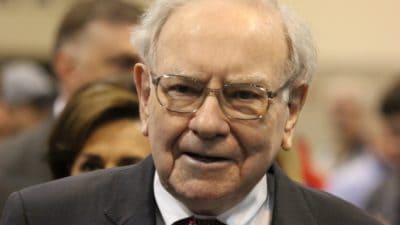Veteran fund manager Neil Woodford sold all his shares in AstraZeneca (LSE: AZN) earlier this year. The FTSE 100 pharma giant had previously been one of his core holdings.
There were two reasons behind the sale. He needed to raise capital to meet redemptions from his under-performing funds and he also wanted to increase his exposure to domestically-focused companies like Lloyds and a number of the UK’s house-builders. He reckoned the investment thesis for AstraZeneca was still appealing but that there was even greater upside potential in the stocks he moved into.
Credibility deficit
I’ve been positive on the investment case for AstraZeneca for a good number of years. However, I’ve been reviewing my take on the valuation and prospects of the company in recent months, following the release of its annual results in February.
In the summer of 2014, when fighting off a 5,500p takeover bid from US giant Pfizer, AstraZeneca’s chief executive, Pascal Soriot, made a couple of pledges. He said falling revenues would reverse and in 2017 be back up to the level of 2013 ($25.7bn). This didn’t happen. The actual revenue delivered in 2017 was $22.5bn. City analysts now don’t expect it to surpass the 2013 level until 2020.
The other pledge Soriot made back in 2014 was that the company would be delivering annual revenue in excess of $45bn by 2023. This now looks far-fetched to me and almost certainly another instance of the chief executive over-promising and under-delivering. As a result, he’s built up a sizeable credibility deficit in my book.
Problematic future
In the halcyon days of the first decade of the century, AstraZeneca was consistently making a return on capital employed (ROCE) of a mid-to-high 20s percentage. It even reached above 30% in some years. However, by 2013 it had fallen to below 10% and by 2014 to below 5%. The company made some progress on ROCE in 2015 (7.8%) and 2016 (9%) but 2017 saw the positive trend reverse with it falling back to 6.3%.
My previous optimism about AstraZeneca being able to return to a high ROCE has been further tempered by a two-part blogpost, ‘Pharma’s broken business model,’ by Kelvin Stott, director of R&D portfolio management at Novartis.
Dr Stott addressed the issue of entrenched falling returns on R&D investment and argued that this won’t be overcome by many of pharma’s current strategies, including continuous improvement, new discovery technologies, in-licensing, precision medicine, big data and artificial intelligence. While his work didn’t go uncriticised, I do see AstraZeneca’s future as more problematic than the bull case would have us believe. In particular, I reckon that returns for shareholders are less certain and have more downside risk than I previously thought.
Current valuation
Given my concerns about management under-delivering on its revenue projections, last year’s fall-back in ROCE and the industry-wide problem of falling returns on R&D investment, I don’t believe the company’s current share price and valuation are appealing.
The price is around the 5,500p Pfizer offered four years ago and the valuation is a rich 22 times current-year forecast earnings with a below-Footsie-average dividend yield of 3.9%. Although the shares are down from last month’s high of over 6,000p, I continue to rate the stock a ‘sell’ at the present level.







